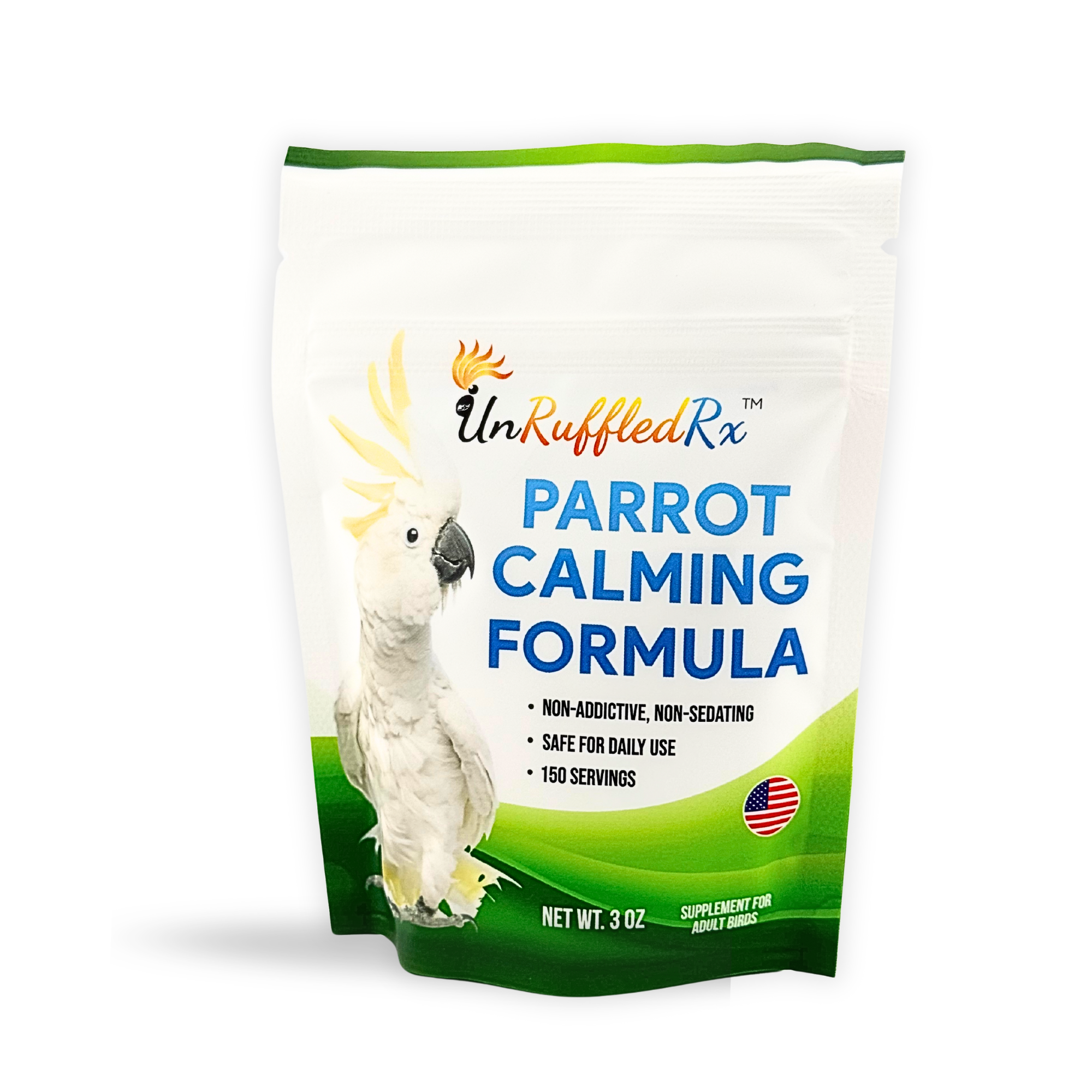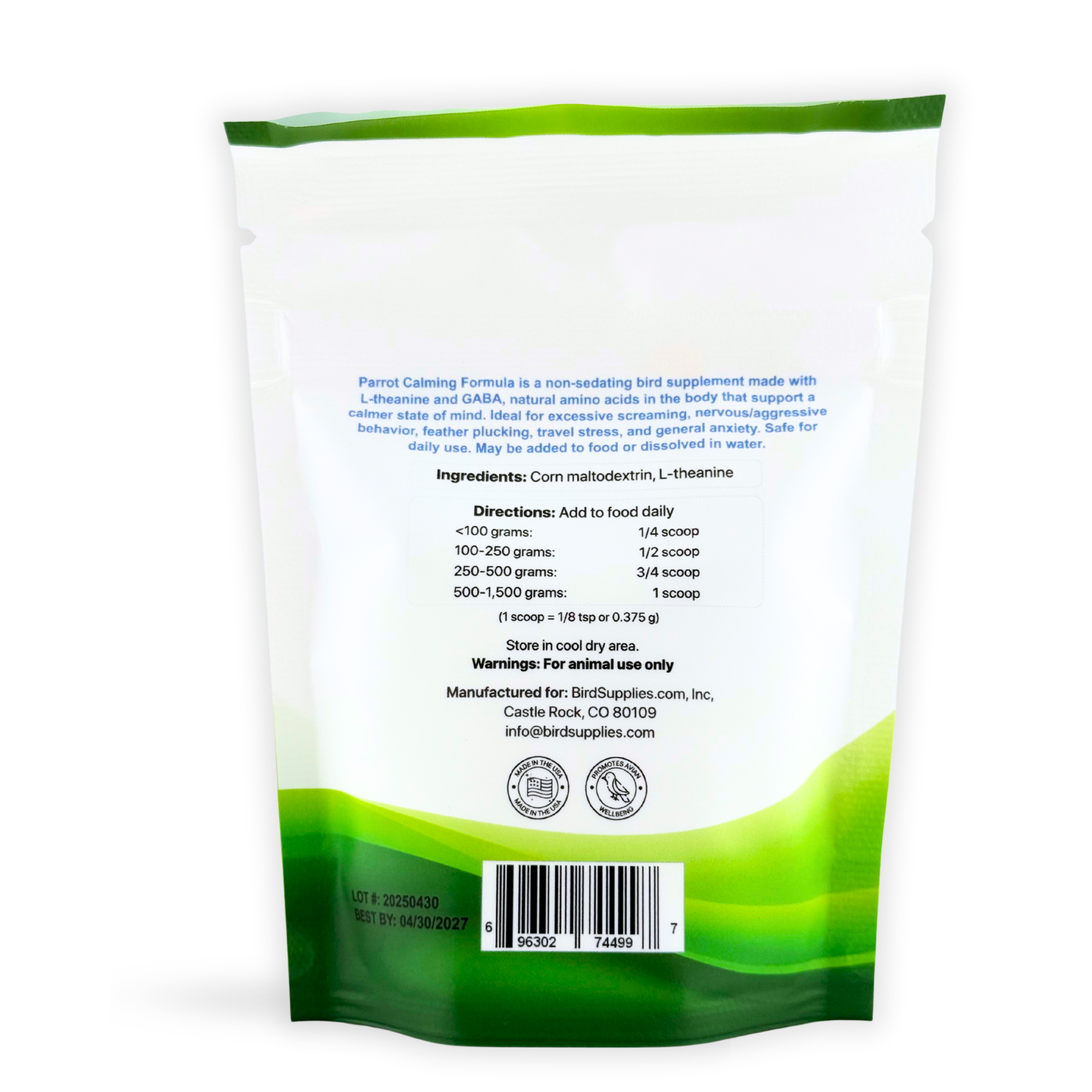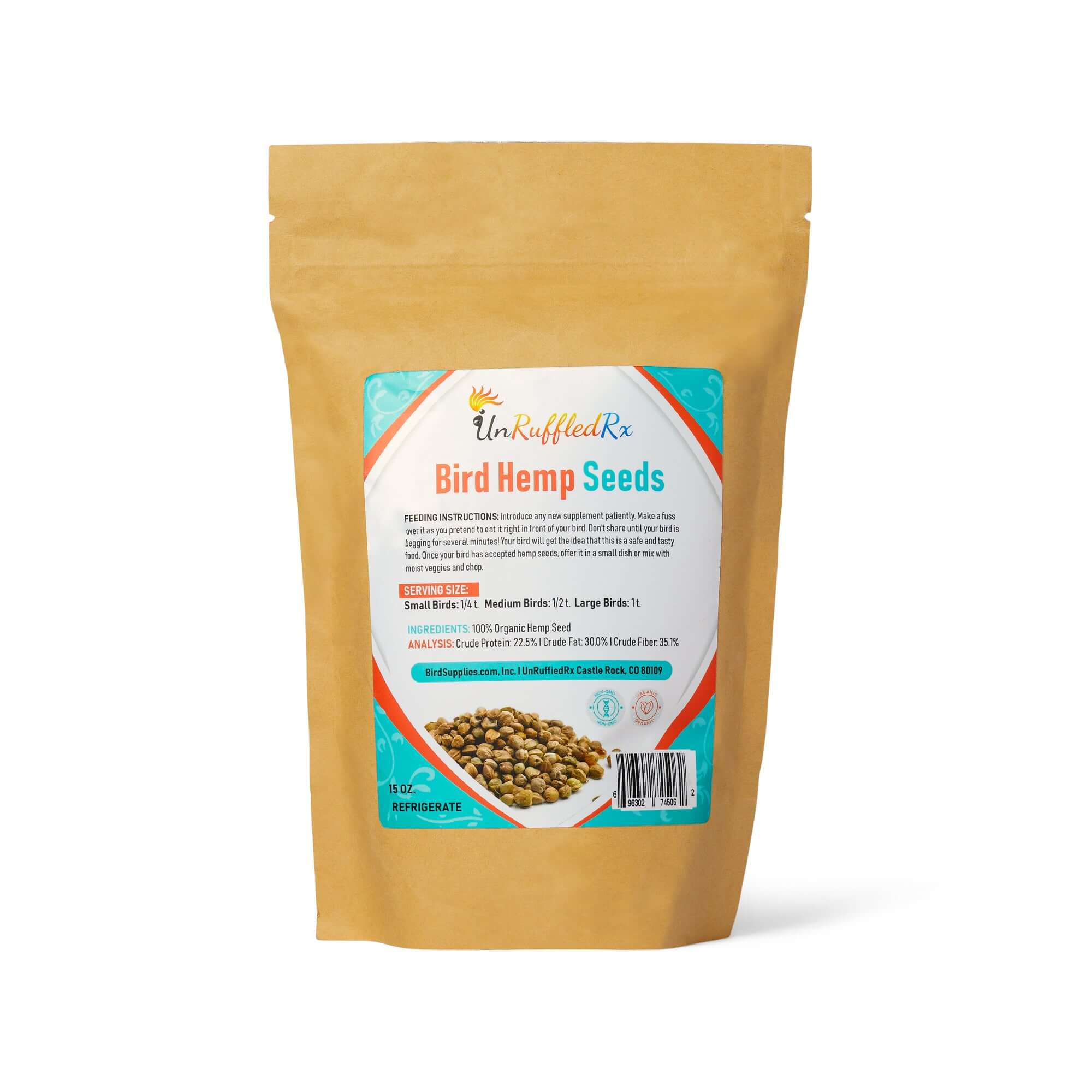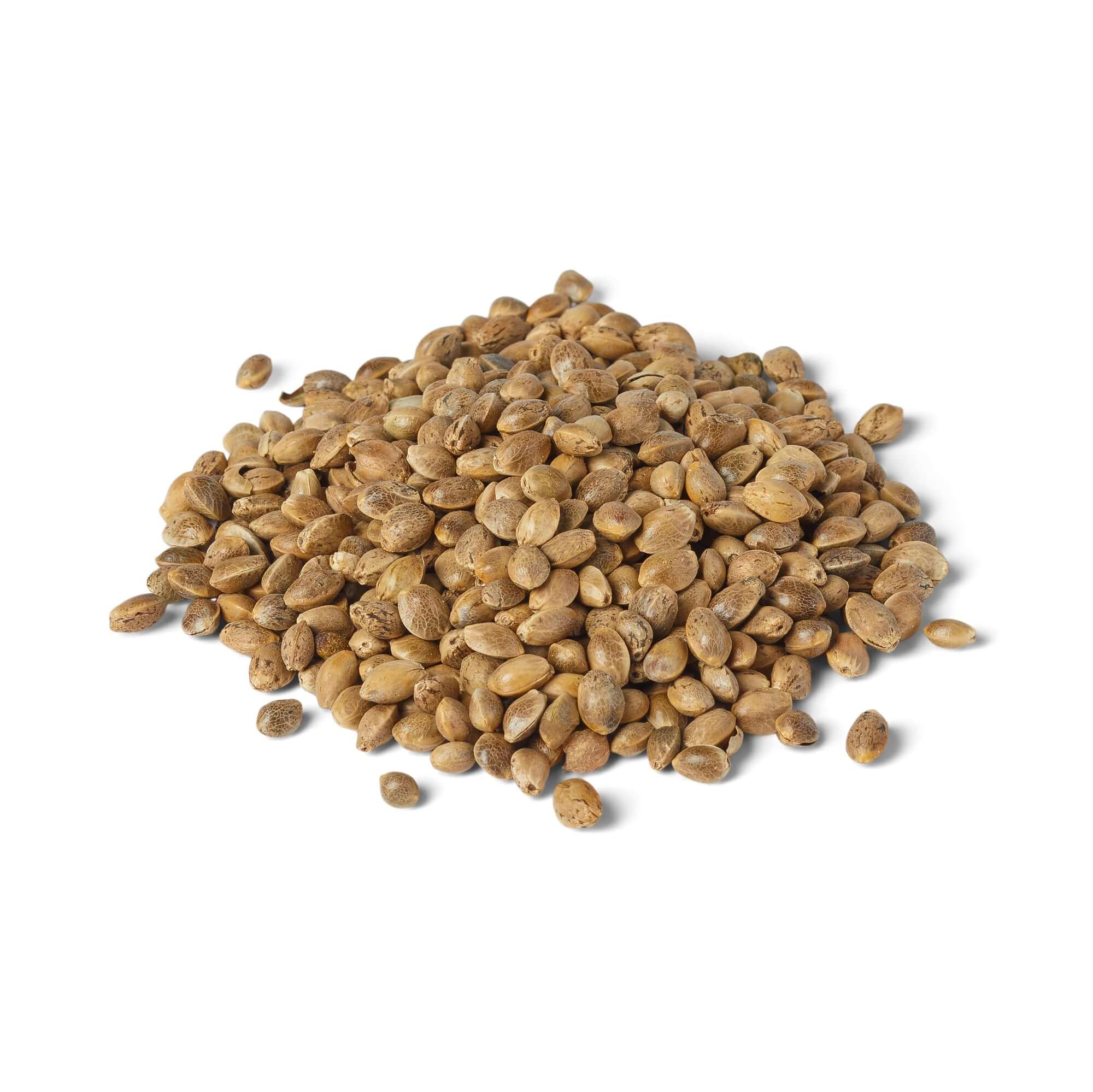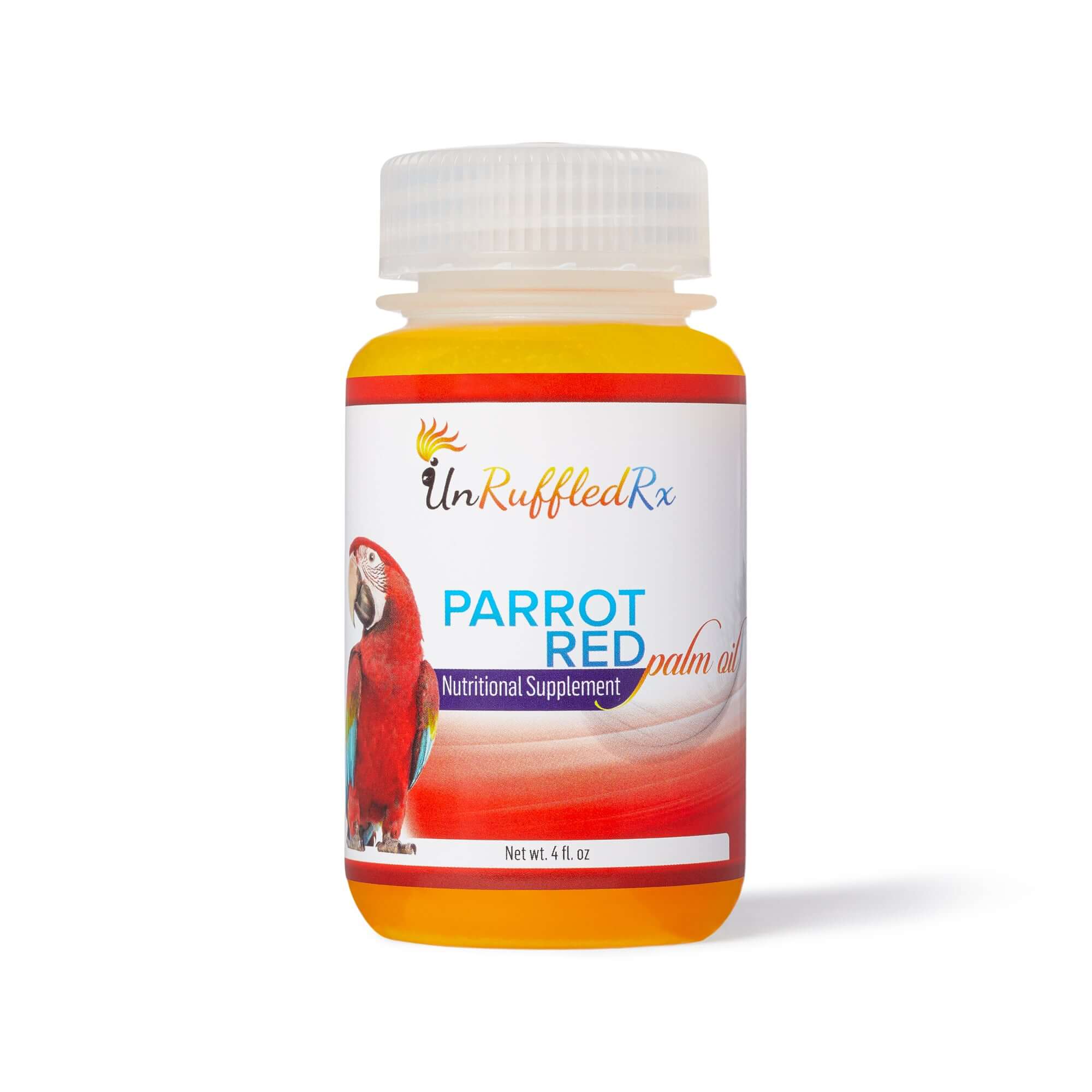Table of Contents
- What Is Positive Reinforcement?
- What Happens When You Don't Use Positive Reinforcement Training?
- 6 Tips To Train Your Bird With Positive Reinforcement
- 1. The Two Of You Are On The Same Team. It's simply the best way to train a bird.
- 2. What Is The Best Treat To Train A Bird?
- Example of Treat Scaling For My African Grey Parrot
- 3. Help Your Learner Understand The Human World
- 4. How Do You Get A Bird To Trust You? Respect Your Bird’s Choice
- 5. Make Sure That Your Bird Is In The Mood For Training
- 6. Create the Best Environment for Positive Reinforcement Training
Good news!
Any animal, at any age, can learn and alter their behaviors through positive reinforcement training. Learn what makes this bird training method so effective and how to get started.
Birds are trained exactly the same way that humans are: They evaluate whether their interactions with the environment have positive or negative outcomes—in other words, are they getting what they want?
Then, they modify their behavior to take in more of the good stuff and less of the bad. Positive reinforcement training is the best way to shape your bird’s future behavior and strengthen the bond between you and your feathered friend.
What Is Positive Reinforcement?
How does it work? Positive reinforcement training is a simple way to teach your bird what to do in various situations through using four types of reinforcers.
The goal of positive reinforcement is to teach your feathered friend new skills to replace the old behavior that you find troubling.
By receiving a motivating reward, like a favorite treat each time it displays a healthy, safe behavior, your bird quickly learns, “Gee... when I step up without biting my person I get my favorite treat!” Your bird will be driven to behave in a way that gets it the motivating reinforcers that it wants.
How Do Pets Learn? Yes. Behavior Is Learned!
If you really want to get good at positive reinforcement, you'll need to make the mind-shift that behavior is learned.
Here are 4 ways that we can teach our pet an expected behavior.
👉 Capturing: This refers to watching for the particular behavior when your bird performs it spontaneously, and providing a motivating reward. I like to call this, "Catch them being good!"
👉Shaping: "Shaping modifies behavior by reinforcing behaviors that progressive approximate the target behavior." (University of Iowa)
👉 Targeting: This is when you use visual prompts to train the behavior. "Instead of just waiting for the behavior to happen you offer your pet a visual cue to prompt it in the right direction."
👉 Learning: This is an advanced training technique of dispersing rewards for desired and punishments for undesired behaviors.
Most behaviorists use the first three methods, capturing, shaping, and targeting. Punishments, like those used in learning, just don't work with most animals. Punishment just makes them fearful.
Now that you understand the 4 behavior learning modalities, let's look at the 4 primary reinforcement strategies.
What Is the Difference Between Positive and Negative Reinforcement?
When people talk about positive and negative reinforcement, it's not what you might expect.
Let's back up a bit. Behavior is learned, as I described above.
It's important to remember that we aren't talking about emotions or whether something feels good or bad.
Bird training is all about providing positive reinforcement. Positive reinforcement includes introducing something your bird truly enjoys, such as sunflower seeds, after they perform a behavior like stepping up on cue. Behavior that gets positively reinforced tends to happen more often.
Negative reinforcement means you remove something to increase a behavior or get that behavior back. Let’s say you have a shy bird you want to train to accept human touch. You place him on a bird stand and step back paying attention to how far away you have to be for him to relax.
Next slowly walk up to the exact distance at which he starts acting uncomfortable, no closer. This is when he begins pulling his feathers closer and is leaning away from you.
This is the negative reinforcement – you have just removed something unwelcome (your proximity) from the bird's environment. Every so often, you can step back just a bit until the bird settles down once more, strengthening the calm response.
Understanding the difference between negative reinforcement and punishment can make a big difference to your pet.
An event or object that provokes a behavioral response in the bird is called a "stimulus." To figure out the differences between positive and negative reinforcement punishment, just remember:
 |
When your pets behavior gets them what they want, they keep on doing it! |
Look at this as math.
It’s either adding (positive) something or taking away (negative) something from your pet.
For a happy pet, we may include a motivating treat whenever they engage in the behavior we’re trying to get them to do. In this case, we’re trying to mould behavior as part of the learning process. But the pet also wants the treat, social interaction, intellectual stimulation, and feeling good about how well they’ve done so far.
For a hyper-anxious pet, we might try removing whatever it is that’s freaking them out in order to gain trust before embarking on behavior training.
In order to gain trust, we might try taking away whatever it is that’s scaring the animal off in order to build trust before starting behavior training. So if the animal is afraid of people, we would remove any close physical proximity. This is negative reinforcement. We are removing scary physical proximity to increase trust behaviors. Literally, we have to build trust with our hyper-anxious pet 1 step at a time.
| Behavior Increases | Behavior Decreases | |
| Stimuli Added | Positive Reinforcement | Positive Punishment |
| Stimuli Removed | Negative Reinforcement | Negative Punishment |
👉 Positive reinforcement is the process of ➕ adding➕ a desirable reinforcer to increase the frequency of behavior
👉 Negative reinforcement is the process of - removing - an undesirable stimulus to increase the frequency of behavior
👉 Positive punishment is the process of adding an undesirable stimulus in order to decrease the frequency of behavior
👉 Negative punishment is the process of removing a desirable stimulus to decrease the frequency of behavior
What Happens When You Don't Use Positive Reinforcement Training?
Think of it this way: every time you train a bird with a "good bird," it's like adding money to your relationship savings account. Every time you punish by yelling "no," it's like withdrawing from your savings account.
If you continue to give your bird negative consequences for undesirable behaviors, this will wreak havoc on your relationship with your pet. Your bird will start becoming afraid or aggressive. If, instead, you teach new, desirable behaviors without reinforcement of the undesirable behavior, your bird will soon move onto the new, desirable behaviors.
Positive reinforcement is literally one of the most effective ways to help a bird learn new behaviors. And it’s easy to use at home too. All you need are a few cheap, easily found items.

- A Clicker
- A training stand
- Favorite treats
6 Tips To Train Your Bird With Positive Reinforcement
1. The Two Of You Are On The Same Team. It's simply the best way to train a bird.
Don't micromanage your bird's every move to ward off undesired behavior. That's exhausting!
Instead, focus on their successes instead of their failures. Catch them being good!
Teach your bird new skills with positive reinforcement - especially clicker training for birds and watch behavior blossom. We call these replacement behaviors - because, as they are reinforced overtime, your bird will be motivated to use these new skills to gain your attention..
2. What Is The Best Treat To Train A Bird?
Trick or treat? Treats are a great way to keep most birds motivated. Every bird is different, so find out which treats motivate your individual bird.
It's really quite easy. Here's a related blog post to get you started.
Some treats are very "high value" while others are medium or low value. We call this "treat scaling." If your bird is working hard to learn, give it high-value treats. If it's not working very hard, give it lower value treats.
Example of Treat Scaling For My African Grey Parrot
| High | Medium | Low |
| Almond Sliver | Pine Nut | Shaved Coconut |
| Diced Papaya | Sunflower Seed | Flax Seed Cracker |
| Sweet Potato | Broccoli | Spinach |

3. Help Your Learner Understand The Human World
Teaching your exotic pet to handle the human world is called “parronting” for a reason—it takes patience!
Sometimes people will say "my bird is just mean.” But, deep down, you know that that's not the case.
In most cases, you simply need to figure out which treats motivate your bird and break the desired behavior into small increments or approximations. Your goal is to not trigger a fear or an aggressive response.
So, if you're trying to teach your bird to "step up" onto your hand, a few small approximations would be:
- Reaching toward you to obtain the treat.
- Allowing you to touch it's foot
- Raising one foot up.
- Placing one foot on your finger... And, so on.
But with super-aggressive, scared or anxious birds, you might need some expert guidance from a bird behaviorist about how to proceed. This is something we often see with rescue birds or birds who have been rescued, abused, or traumatized.
These birds are typically being “reinforced” by avoiding human contact. So, in these cases, we just need to build things up and begin training them to accept human contact before we try to alter their original behavior.
4. How Do You Get A Bird To Trust You? Respect Your Bird’s Choice
Birds make a choice on whether to try to perform the new behavior that you're requesting. If it seems too hard they'll just give up.
We know that if we try to force a bird to try a new behavior, it slows training down. To make your bird training sessions as effective as possible, it's best to focus on how behavior is learned in the first place.
I'd suggest that you focus on capturing the behavior or shaping the behavior by eliciting small approximations of it.
As an example of positive reinforcement, take the stepping up example from earlier and instead of just sticking your finger into the parrot’s chest and even pushing it backwards to force him/her to step up, reward incremental steps towards getting the behavior you want. Not all desirable behaviors are easy to let go of though.
Fortunately, the same principles of gradual shaping apply to even the toughest challenges.
5. Make Sure That Your Bird Is In The Mood For Training
Have you ever wondered what your pet was thinking during a training session?
You can tell by looking at their cues. Is your bird paying attention to you? Is it excited to get the treat? Then keep teaching. But, if your pet is not into training at that time, come back later.
Likewise, if you're feeling impatient or cranky, choose another time to train.
6. Create the Best Environment for Positive Reinforcement Training
Keeping training sessions short and positive. Help your bird stay focused with these simple tips.
- Train when both of you are looking forward to it.
- Create a quiet, distraction-free training area
- Have small bite-sized pieces of highly motivating treats ready to reward.
- Mark desired behavior with a clicker.
- Break down ultimate behavior into manageable, easy steps.
- End each session on a positive note.
Related Posts:
10 Tips For A Calmer Bird Using Positive Reinforcement
How To Train Birds With Positive Reinforcement
How To Choose Bird Training Treats That Work
Choosing Bird Training Supplies For The Best Results
References:
https://psychology.uiowa.edu/comparative-cognition-laboratory/glossary/shaping#:
https://www.dog-training-excellence.com/target-training.html
Diane Burroughs, LCSW is a licensed psychotherapist trained in ABA therapy techniques. She specializes in avian anxiety disorders and is certified in Nutrition For Mental Health. Diane has written a number of bird behavior books and she offers behavior consultations. She's developed a range of UnRuffledRx Science-backed Parrot Wellness Supplies.
Diane's products have been featured in the Journal of Avian Medicine and Surgery and at Exoticscon, a conference for exotic pet veterinarians. Her bird collars & supplements are stocked in avian vet clinics and bird stores throughout the US. With over 30 years in the field of behavior, Diane has created thousands of successful individualized behavior plans that help pets thrive.
TAGS: #BirdBehavior #BirdTraining
SHARING IS CARING! PLEASE SHARE ON YOUR FAVORITE SOCIAL MEDIA NOW!








